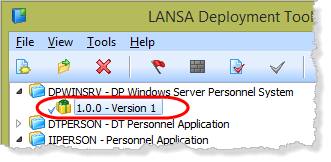
A Windows Server install will always need to be run using a Windows Administrator profile. For your own applications, you would now install the server application to a Windows server. For training purposes, you will install it to your PC.
1. In the Deployment Tool main window, select the IIWINSRV application and click the Go to folder  toolbar button to open Explorer in the application folder. For example:
toolbar button to open Explorer in the application folder. For example:
C:\Program Files (x86)\LANSA\X_WIN95\X_LANSA\x_apps\IIWINSRV
2. For Windows 7, using a user who is a member of the Administrator group, double click on the MSI file to run it.
For Windows 8, open a Command Prompt using Run as Administrator.
a. Navigate to the application packages folder, as shown above.
b. Enter the command msiexec.exe /I II then press Tab and the MSI file name will autocomplete, for example: msiexec.exe /I IIWINSRV_v1.0.0_en-us.msi then press Enter to start the install.
3. A series of Windows install dialogs will be displayed:
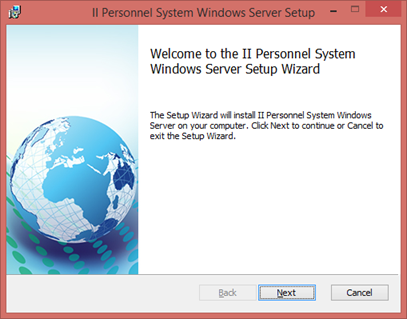
4. Click Next to continue.
5. The End User Agreement dialog is displayed:
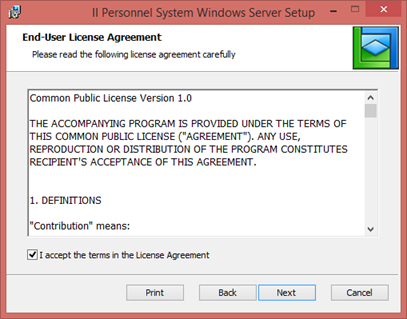
A sample end user license agreement is provided in:
...\x_app\X_Wix\Content\license.rtf
You should edit or replace this file to implement your company's licensing terms if necessary.
6. Select the 'I accept….' check box and click Next to continue.
The Installation Scope dialog is displayed:
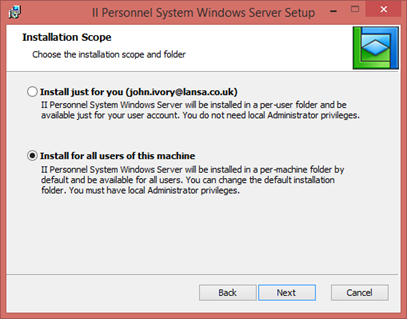
When installing a server application, this should always be installed for All Users.
7. Select the Install for all users of this machine radio button. Click Next to continue.
The Destination Folder dialog is displayed:
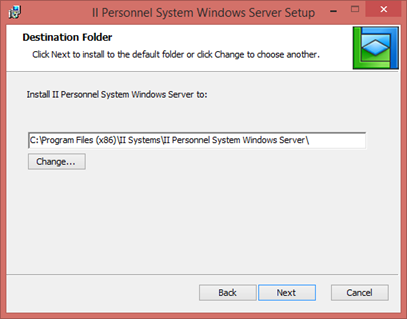
You will notice that the default install path includes Company Name and Application Name.
The Change button allows you to select an alternative install path.
8. The Setup Local Database dialog is displayed:
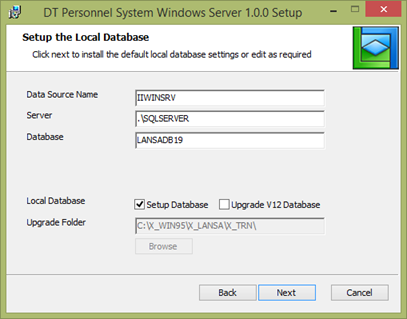
Notice that a number of parameters are input capable and may be changed, because the Prompt during installation checkbox was selected.
9. It is essential to be aware at this point that the Local Database, Setup Database check box must be selected. The install will then continue by defining and populating the LANSA repository tables and depending on what options were setup for the application files, the install will build the application tables and views and load the file data.
10. Click Next to continue.
11. Since a Listener is being installed the Communications Ports dialog is shown. Confirm that the port number is as required.
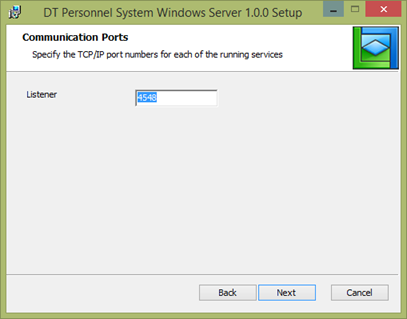
12. Click Next to continue.
The Choose Setup Type dialog is displayed:

13. Select any Setup Type and then click Next to continue.
The Ready to Install dialog is displayed:
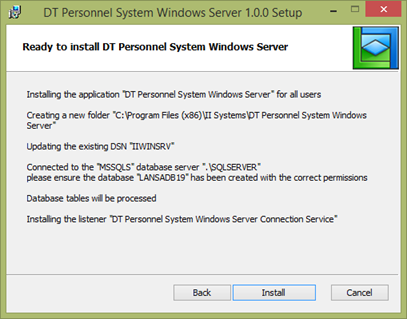
This dialog shows:
Note that during the install process, each dialog has a Back button which allows you to back out and change earlier options which were selected.
14. Click Install to continue and a progress bar will be displayed as the install file is unpacked and run.
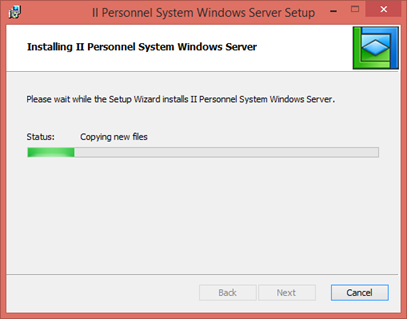
Once the install process is complete, the Finish dialog is displayed:

15. Click Finish to close the install program.
16. In the Deployment Tool main dialog, select Version 1 in the II Windows Server Personnel System application and click on the Distributed  toolbar button to set the package status to Distributed. The package can no longer be opened in the Package Maintenance dialog.
toolbar button to set the package status to Distributed. The package can no longer be opened in the Package Maintenance dialog.
